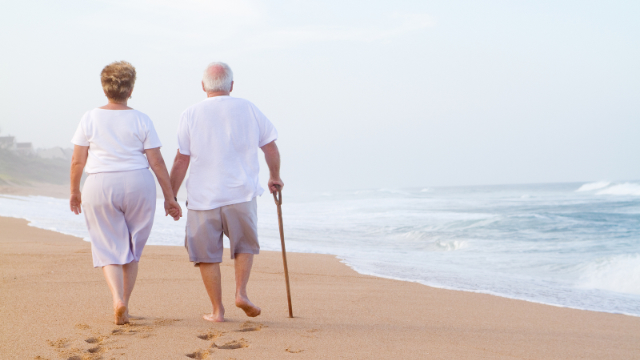
Regardless of your age, activity level, or daily habits, you need your knees to function well and to live your days as you’d like to. But when pain arises—whether it’s due to a traumatic injury like a strain or sprain, a condition that’s been slowly progressing like knee osteoarthritis (OA), or some other cause—it will immediately interfere with your ability to accomplish these everyday markers that are essential for your wellbeing. In essence, knee pain can get in the way of allowing you to be you.
Nobody wants to live with a “bad knee” for any extended period of time, especially athletes who are trying to return to the field or court as quickly as possible. The longer the time spent with a knee that’s not 100%, the further away these individuals are likely to move from the usual activities and encounters that make up their days.
So it should go without saying that when knee pain does develop, the primary goal is nearly always to find ways to relieve it in a quick and efficient manner. While many knee conditions require the care of a medical professional to diagnose and treat, there are a number of steps you can take on your own at home to help you experience an immediate pain reduction. Below are some of the best home remedies to address your knee pain. Be sure to talk with your doctor if you have any questions and before attempting anything you’re unfamiliar with:
- Follow the PRICE protocol: if a traumatic knee injury occurs—in sports or elsewhere—it’s best to adhere to this protocol within the first 24-72 hours to alleviate symptoms and reduce the chances of another injury occurring
- Protection: protect the knee with a bandage, elastic wrap, or tape to prevent further damage from occurring
- Rest: take some time to rest and recuperate immediately after the injury; the amount of time needed depends on the type and severity of the injury, but in general, avoid anything that aggravates your knee pain
- Ice: applying ice to the knee slows down blood flow and reduces inflammation, swelling, and muscle spasms; start using ice as soon as possible after the injury and apply it for 15-20 minutes every 1-2 hours for the first few days
- Compression: wrap an elastic bandage snugly—but not too tight—starting a few inches below to a few inches above the knee; the pressure of this wrap will help to further reduce inflammation and swelling
- Elevation: lie on your back and elevate your leg to a level above your head for as much time as you can manage within the first 48 hours of a knee injury; doing so will drain the pooling of fluids away from the knee and reduce swelling, inflammation, and pain in the process
- General exercise: unless the injury is severe or your mobility is extremely impaired, you should try to exercise regularly after an initial period of rest; maintaining an adequate fitness level is beneficial for all types of knee issues, and cardiovascular exercises can strengthen the muscles that support your knee while also increasing flexibility; depending on your knee injury or condition, you may want to avoid high-impact exercises that involve lots of running and jumping, and instead focus on low-impact alternatives like swimming, aquatic exercise, cycling, and the elliptical machine
- Massage: while a trained professional will provide you with the greatest benefits, you can also massage the painful area yourself; probe the area around your knee with the tips of your fingers starting with the top of your calf to the bottom of your thigh to see if you can identify the area that hurts or is tender; once found, try a little light massage on and around the knee to see if it relieves your pain or eases tension; if it increases your pain levels, stop immediately
- Foam rolling: using a foam roller has been found to be helpful for breaking up scar tissue in the muscles of the legs that can contribute to knee pain; the quadriceps muscle and the IT band of the knee are two areas that should be targeted, especially for runners and active individuals
- Range of motion exercises: improving the flexibility and range of motion of the leg muscles is a crucial step for addressing all types of knee pain; try these:
- Clam shells: lie your right side with your knees bent and feet and hips stacked; engage your core and keep your feet together as you raise your left knee out to the side while keeping your right knee down on the floor; hold your lifted knee for one second, then lower and repeat for 20 repetitions on each side
- Kneeling quad stretch: bring one knee down to the ground and bend the opposite leg so your knee is right over your ankle and thigh parallel to the ground; try to reach your arm back and grab the foot of the leg that’s on the ground; bring your heel closer to your thigh to stretch your quad; hold for at least 20-30 seconds on each side
